B0041VYHGW EBOK (74 page)
Authors: David Bordwell,Kristin Thompson

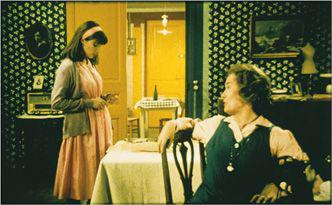
5.67
Une chamber en ville.
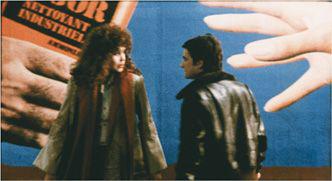
5.68
Last Tango in Paris.
A 2.35:1 ratio
(
5.69
)
was standardized by the CinemaScope anamorphic process during the 1950s. The 2.2:1 ratio was chiefly used for 70mm presentation
(
5.70
),
though as film stocks have improved, 70mm filming and projecting have largely disappeared.
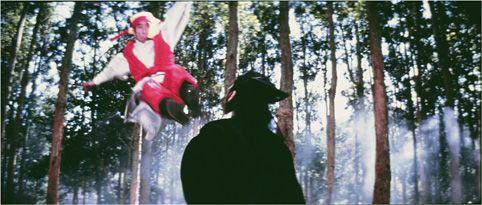
5.69 Anamorphic widescreen in
The Valiant Ones.
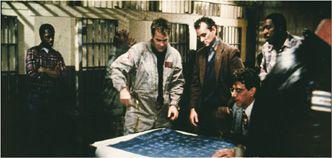
5.70
Ghostbusters.
The simplest way to create a widescreen image is by
masking
. it at some stage in production or exhibition
(
5.71
).
This masking is usually called a
hard matte.
Alternatively, many contemporary films are shot full-frame (that is, between 1.33:1 and 1.17:1) in the expectation that they will be masked when the film is shown in theaters or transferred to video. Sometimes the full-frame option results in lights or sound equipment being visible. In
5.72
you can clearly see the microphone bobbing down into the shot. This would not be seen in the theater, where the top and bottom of the frame would be masked by the aperture plate in the projector. The colored lines in our illustration show a projection framing at 1.85:1.
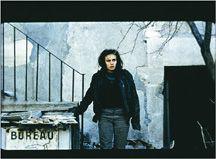
5.71 This frame from Agnès Varda’s
Vagabond
was masked during filming or printing.
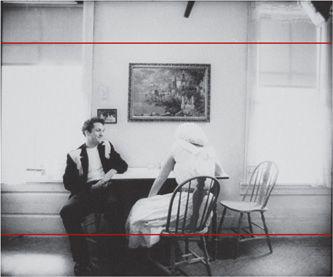
5.72 A full-frame image from Martin Scorsese’s
Raging Bull.
Note the microphone visible at the top edge.
CONNECT TO THE BLOG
Can framings create humor? We show how they can in “Funny framings.”
COMMON ASPECT RATIOS OF 35MM FILM
CONNECT TO THE BLOG
The subtleties of emphasis that can be achieved with anamorphic widescreen framings are discussed in “Gradation of emphasis.”
Another way to create a widescreen image is by using an
anamorphic
process. Here a special lens squeezes the image horizontally, either during filming or in printing. A comparable lens is necessary to unsqueeze the image during projection. The image on the 35mm filmstrip is shown in
5.73
, while the image as projected on the screen is shown in
5.74
. The anamorphic aspect ratio established by CinemaScope was 2.35:1 until the 1970s; for technical reasons, it was adjusted to 2.40:1. This is the aspect ratio of Panavision, today’s most frequently used anamorphic system.
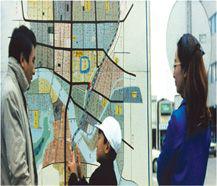
5.73 A frame from Nagisa Oshima’s anamorphic film
Boy,
squeezed on the original film strip.

5.74 The same frame, unsqueezed as it would be in projection.
Widescreen cinema, either masked or anamorphic, has significant visual effects. The screen becomes a band or strip, emphasizing horizontal compositions. The format was initially associated with genres of spectacle—Westerns, travelogues, musicals, historical epics—in which sweeping settings were important. But directors quickly learned that widescreen has value for more intimate subjects, too. The frame from Kurosawa’s
Sanjuro
(
5.75
)
shows how an anamorphic process (Tohoscope, the Japanese equivalent of CinemaScope) can be used to create significant foreground and background areas in a confined setting.
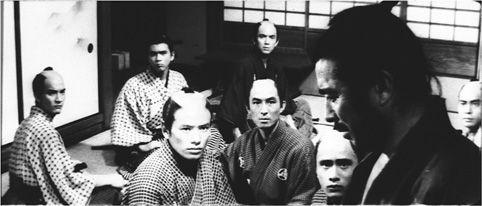
5.75 Akira Kurosawa’s
Sanjuro.
In some widescreen compositions, the mise-en-scene draws the audience’s attention to only one area of the image. A common solution is to put the important information slightly off center
(
5.76
),
or even sharply off center
(
5.77
).
Or the director may use the widescreen format to multiply points of interest. Many scenes in Im Kwon-Taek’s
Chunhyang
fill the frame with bustle and movement
(
5.78
).
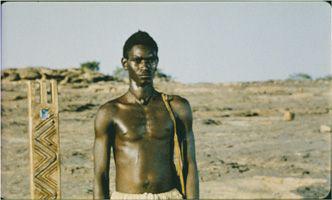
5.76 Souleymare Cissé’s
Yeelen.